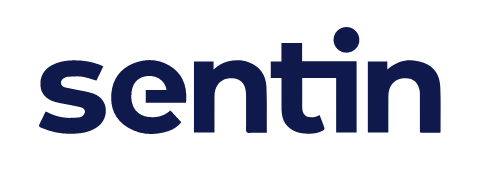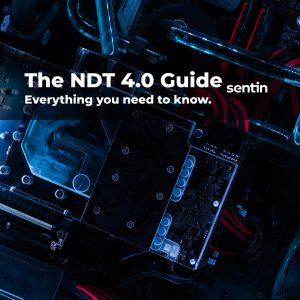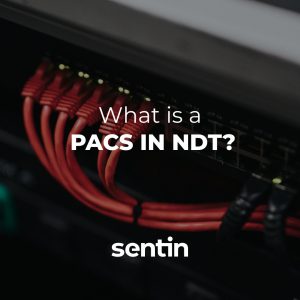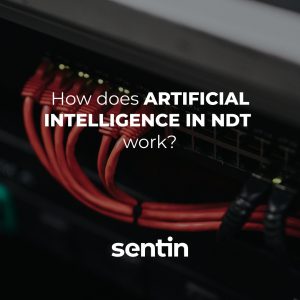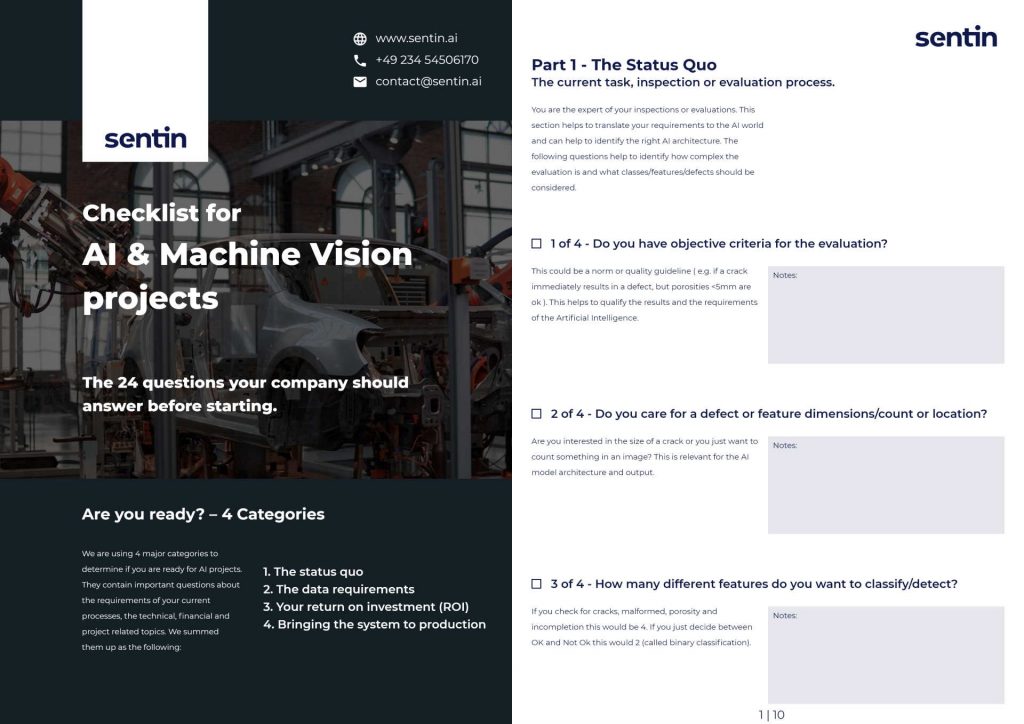Normal HTML was yesterday
If you ask people with a technical or engineering background if they know web technologies, most of them will say something like: “Yes, these are HTML pages and JavaScript“. Perhaps they will also tell you that they have also designed a web page some time ago, or something from jQuery.
But web technologies have become much more than static HTML pages with headlines and images. Their application can be found today in many areas of everyday life. Almost every app on a smartphone uses HTTP(S) requests to get information or send data to a server.
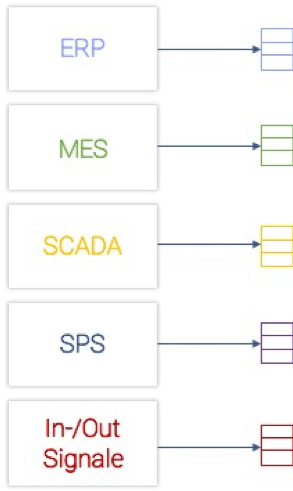
The Status Quo
In the world of mechanical engineering and manufacturing, there are many areas where data can be collected or already exist. Traditional ERP or MES applications are often developed for one platform (such as Windows) and run one or more databases in the background. Mostly they are precisely tailored to (company) processes and map the workflow from order to delivery or from manufacturing steps to assembly. The collected data then often serves only for documentation purposes. However, the programs are often too limited for in-depth analysis because they are too specific and bound to the presentation possibilities of the platform.
Here web technologies can help
Data transmission
For some years now, however, data analyses have not been performed using the programming language of a platform such as C++ on Windows, but more flexible means such as Python or R have been used. These tools do not care whether they are used for the analysis of production or operational data, or whether they analyse weather data. They live on a broad infrastructure of free and freely available software packages, which can also provide the data via a HTTP(S) interface, for example. The so-called RESTful interfaces are an abstraction of these interfaces, which allow the transfer, manipulation, deletion or query of data. It does not matter whether they handle a complex structure like operating data or simple time series of machine data. Features such as pagination or streaming also make it possible to transfer or split up almost any amount of data. This is often much more difficult and less flexible with conventional data queries, for example via SQL. The various software libraries of the web technologies can, however, build on existing systems and first read out the data e.g. via SQL and then pass it on via RESTful service.
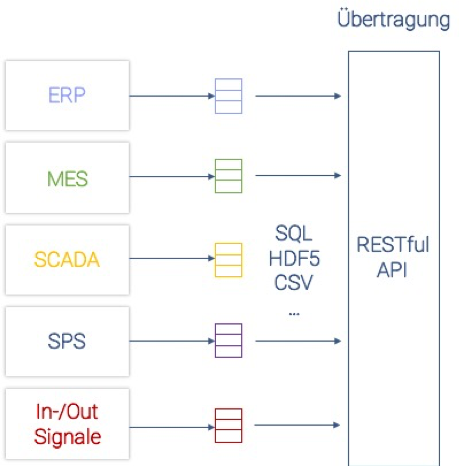
Data processing
Even though the transmission possibilities offered by these technologies are quite flexible, it is often not even necessary to transmit the entire data stock to the user, as this can cost time and memory. In addition, the user’s hardware is not always optimized to perform complex calculations (such as training a prediction model for anomaly detection). These can then be better executed on a server or cloud, for example. The above-mentioned programming languages (R and Python) also support the use of graphics cards and special software libraries, which, when run externally, do not paralyze the end user’s computer.
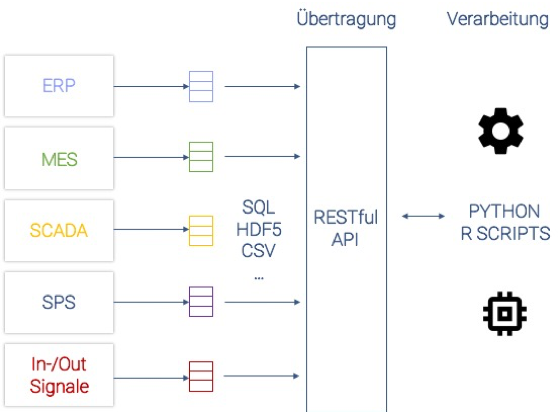
Data visualization
Once the calculations have been performed, it is sufficient to present the user with meaningful visualizations or provide intelligently filtered data. This is where web frameworks in particular can play out their strengths, as they can generate user interfaces quickly and platform-independently thanks to optimized rendering logic. Software libraries such as Plotly.js or D3 are powerful visualization tools and offer great flexibility, e.g. for analyzing production data. They can be integrated very well into technologies that have replaced classical HTML, such as React.js. Together, they can create much more flexible user interfaces than native programming frameworks such as Microsoft’s UWP allow.
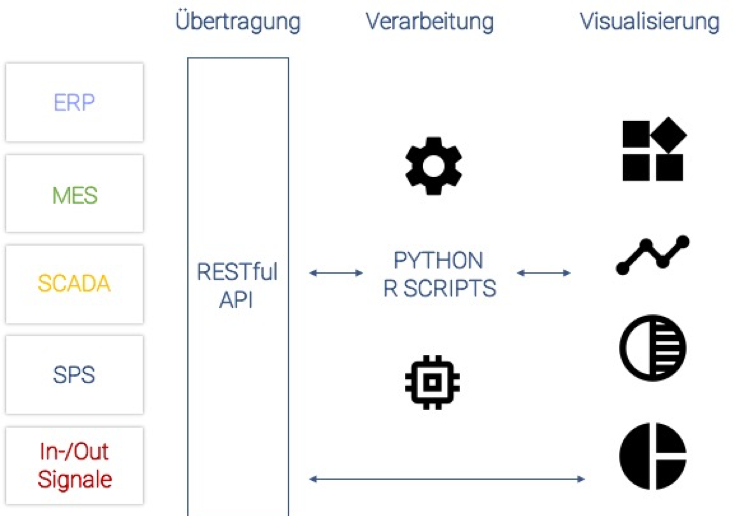
Hardware der Nutzer nicht immer optimiert
Another advantage over native programming is the delivery of the application. While classic ERP or MES applications usually require an installation and store large files on the user’s computer, web applications can be called up easily via a browser, regardless of the platform, whether it is a Windows laptop, Android smartphone or iPhone.
Furthermore, updates and improvements can be distributed faster and without installation.
Although a cloud application would be conceivable, the client-server model of a web application also offers the possibility of being deployed on a company server. This has the advantage that the data and confidential information (e.g. the workload or the operating behaviour of the machines) remain within the company.
By using so-called docker containers, integration into an existing server network or the later move to a cloud can also be seamlessly accomplished. Configuration effort and resource consumption are kept low, so that end users, e.g. an engineer in the own company, can easily use the functions by simply calling up the page.
If local use away from the browser is required, Docker can also help to run the application at the user’s site, if the user has his own workstation, for example. Another framework that can offer the application in a bundle is Electron. Well-known representatives like Slack or WhatsApp Desktop use web technologies to program their user interface and make it available via Electron. In doing so, they share the code that you would see in the browser with that in the desktop app.
This means that most software distribution scenarios can be realized with Web technologies without having to make major adjustments or develop new software. Be it on-premise solutions, where the data remains in the company and the production, cloud solutions, where no hardware has to be purchased, or individual applications, which run bundled on a user’s computer.
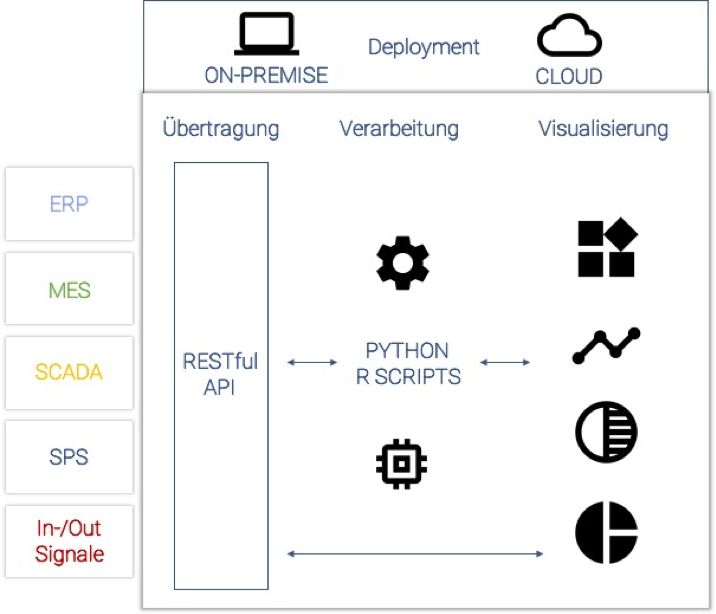
Conclusion
Since the programming of simple HTML pages, the world of software development has changed dramatically. While some ERP or MES applications require a native implementation, Web technologies can show their advantages especially for analysis purposes. The easy integration in companies and the simple docking to existing solutions make their use even more interesting. It is precisely this flexibility that the broad landscape of tools and data sources in the industrial analytics environment now requires to produce productive solutions. In addition, abstraction of analyses and the preparation of data can provide great added value for operational business and everyday tasks in industry. To achieve this, however, users should be able to quickly generate added value without the need for major installations and configurations. Lightweight data preparation and visualization using web technologies can play a major role in achieving this. Especially the fast growing developer community and technological maturity in the web environment offer a potential to revolutionize industrial analytics.
Icons by Material Icons https://material.io/tools/icons/?style=baseline
sentin EXPLORER
In order to save time and nerves during testing and evaluation, you should use the right tool. The sentin EXPLORER facilitates the evaluation by automatically analyzing and marking of discrepancies.
External and internal characteristics play a role in the evaluation of welds. Non-destructive material testing such as visual inspection (visual inspection – VT) or imaging methods (e.g. radiographic testing with X-rays or gamma rays – RT, or ultrasound with phased array – UT) can be used to examine them for cracks or pores, for example.
More about this in our article:
